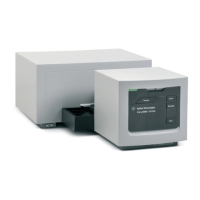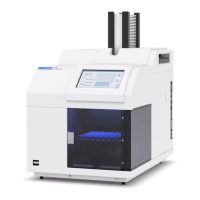224 Understanding Your Agilent ChemStation
10 Using the ChemStation Reports
Report Destination
Report Destination
The report can be sent to either:
• Screen
The report (including text and graphics) is displayed on the screen in the
report preview window from which it can be printed.
• Printer
The report comprising text and graphics is printed on the currently
selected printer.
• File
The report is saved to a file. If the data is saved to a file it is possible to
reprocess the data with another program, for example, Microsoft Windows
EXCEL.
Report File Formats
A report can be saved in different formats. Each format has a specific
extension. It is possible to select more than one format for a report.
.TXT The report text is printed as a UNICODE text file.
.EMF Each report graphic (signal or calibration curve) is saved in a Microsoft
Windows metafile (WMF). Several .WMF files for one report are possible. The
generated file format adheres to the Microsoft standard metafile format as
defined in the Windows software development documentation. These files are
compatible with the Aldus Placeable Metafile (APM) format used by a number
of proprietary software packages.
.DIF The tabular report data is saved in Data Interchange Format (DIF). This
format is accepted by spreadsheet programs, for example, Microsoft Windows
EXCEL. Independent from the report style selected, only the information
contained in the report style Short will be saved.

